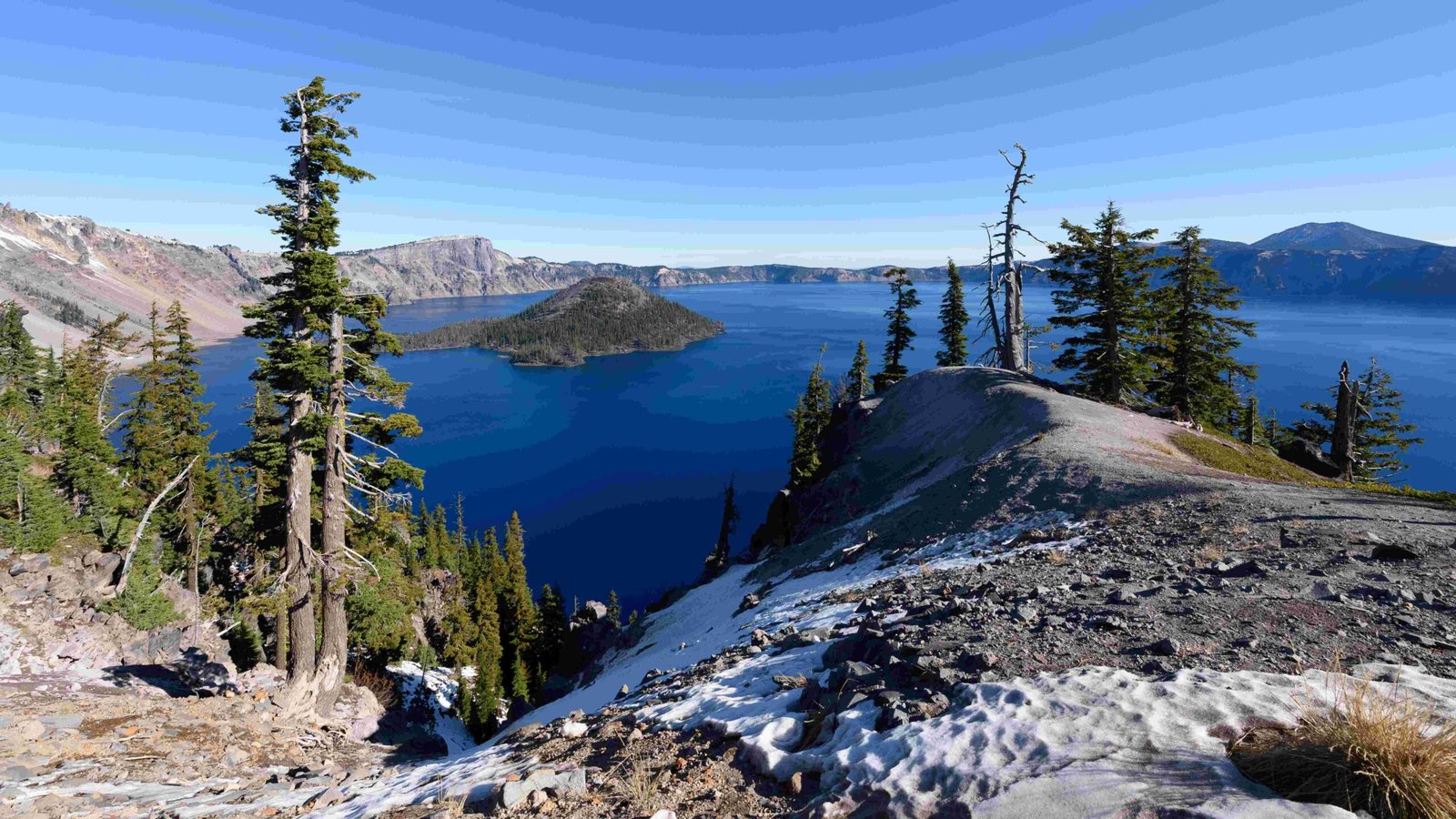Crater Lake, renowned for its deep blue waters and stunning volcanic landscape, is a natural wonder that attracts visitors year-round. However, when it comes to ice skating on Crater Lake, enthusiasts may be disappointed. The lake’s unique geological features and climate conditions prevent it from freezing over, making ice skating impossible. Despite this, Crater Lake National Park offers a variety of winter activities for visitors to enjoy amidst its snowy surroundings.
Why Can’t You Ice Skate on Crater Lake?

Crater Lake’s inability to support ice skating stems from several factors:
-
Depth: At 1,943 feet deep, Crater Lake is the deepest lake in the United States. This immense depth prevents the entire lake from freezing.
-
Water Temperature: The lake’s average surface temperature ranges from 32°F to 66°F, rarely dropping low enough to freeze.
-
Climate: Despite heavy snowfall, the area’s climate is not consistently cold enough to freeze the lake’s surface.
-
Geothermal Activity: Underwater hot springs contribute to keeping the lake’s temperature above freezing.
What Winter Activities Can You Enjoy at Crater Lake Instead?

While ice skating isn’t an option, Crater Lake National Park offers numerous winter activities:
- Cross-country skiing
- Snowshoeing
- Snowmobiling
- Winter photography
- Wildlife viewing
Popular Winter Trails
| Trail Name | Distance | Difficulty | Activity |
|---|---|---|---|
| Rim Village | 1.1 miles | Easy | Snowshoeing |
| Garfield Peak | 3.4 miles | Moderate | Skiing |
| Wizard Island Overlook | 2.2 miles | Easy | Snowshoeing |
When Is the Best Time to Visit Crater Lake in Winter?
The winter season at Crater Lake typically runs from November to April. During this time:
- The park receives an average of 43 feet of snow annually
- Temperatures range from 19°F to 35°F
- Many park facilities close, but winter recreation opportunities abound
What Safety Precautions Should Visitors Take?
When visiting Crater Lake in winter:
- Check weather conditions and road closures before your trip
- Dress in warm, waterproof layers
- Bring emergency supplies and extra food
- Inform someone of your plans before heading out
- Stay on designated trails and away from snow cornices
Are There Any Nearby Ice Skating Opportunities?
While Crater Lake itself doesn’t freeze, there are ice skating options in the surrounding area:
- Bill Collier Ice Arena (Klamath Falls, 60 miles away)
- Indoor rink
- Open year-round
-
Offers public skating sessions and lessons
-
The RRRink (Medford, 90 miles away)
- Indoor rink
- Open September through May
- Provides skate rentals and public sessions
How Does Climate Change Affect Winter Activities at Crater Lake?
Climate change impacts Crater Lake’s winter landscape:
- Reduced snowpack in recent years
- Earlier spring thaws
- Potential changes to winter recreation opportunities
Park officials are monitoring these changes and adapting management strategies accordingly.
What Equipment Should You Bring for Winter Activities?
For winter activities at Crater Lake, consider packing:
- Warm, waterproof clothing (layers are key)
- Sturdy, waterproof boots
- Snowshoes or cross-country skis (rentals available)
- Sun protection (sunglasses, sunscreen)
- Emergency kit (first aid supplies, flashlight, extra food and water)
How Can You Experience Crater Lake’s Beauty in Winter Without Ice Skating?
Despite the lack of ice skating, Crater Lake offers unique winter experiences:
- Ranger-led Snowshoe Walks: Free guided tours to learn about the park’s winter ecology
- Winter Rim Drive: When conditions allow, a 10-mile section of Rim Drive is plowed for winter access
- Photography: Capture stunning winter landscapes and wildlife
- Stargazing: Clear winter nights offer exceptional views of the night sky
What Wildlife Might You Encounter During a Winter Visit?
Winter visitors to Crater Lake might spot:
- Pine martens
- Snowshoe hares
- Bald eagles
- Clark’s nutcrackers
- Roosevelt elk (in lower elevations)
Remember to observe wildlife from a safe distance and never feed animals.
How Has Crater Lake’s Winter Tourism Evolved Over Time?
Crater Lake’s winter tourism has changed significantly:
- Early 1900s: Limited winter access due to heavy snowfall
- 1930s: Introduction of winter sports activities
- 1980s: Increased popularity of cross-country skiing and snowshoeing
- Present: Focus on sustainable winter recreation and education
While ice skating on Crater Lake remains an impossibility, the park’s winter offerings continue to attract visitors seeking unique cold-weather experiences in a breathtaking natural setting.
References:
1. National Park Service – Crater Lake Weather
2. National Park Service – Crater Lake Current Conditions
3. National Park Service – Crater Lake Operating Hours & Seasons

